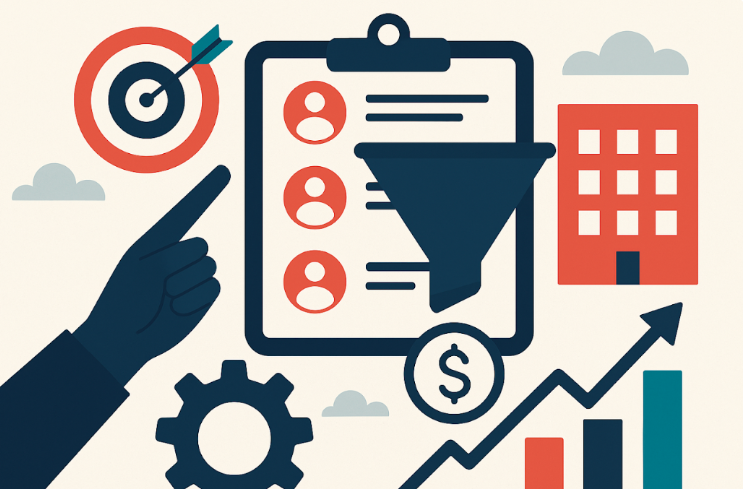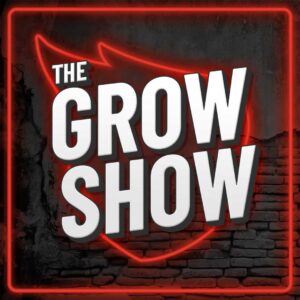In today’s competitive landscape, accounting firms are no longer just competing on price or service offering. They’re competing on speed, especially when it comes to qualifying and converting new leads. The ability to quickly identify which leads are most likely to convert can be the difference between winning a high-value client and letting them slip away. That’s where accounting industry lead scoring services come in.
Lead scoring allows your firm to prioritize the right prospects based on behavior, demographics, and readiness to buy. When integrated with your CRM and marketing automation systems, lead scoring creates a smarter, more efficient sales process. You spend less time chasing bad fits and more time closing the deals that matter.
In this in-depth guide, we’ll explain what lead scoring is, how it works for accounting firms, the tools that support it, and how to integrate scoring with your CRM to accelerate your growth. We’ll also show you how to schedule a free lead audit call to uncover opportunities in your current pipeline.
Contents
- 1 What Is Lead Scoring and Why Does It Matter for Accounting Firms?
- 2 3 Key Components of an Effective Lead Scoring Model
- 3 Lead Scoring Thresholds: What to Do With Each Tier
- 4 Tools That Support Accounting Industry Lead Scoring Services
- 5 Integrating Lead Scoring with Your CRM
- 6 How Lead Scoring Drives Higher Close Rates
- 7 4 Common Lead Scoring Mistakes (and How to Avoid Them)
- 8 Advanced Lead Scoring Tips for Accounting Firms
- 9 Real-World Application: Building a Lead Engine with Scoring
- 10 Get Started with a Lead Scoring Audit
What Is Lead Scoring and Why Does It Matter for Accounting Firms?
Lead scoring is the process of assigning values to leads based on how well they match your ideal client profile and how engaged they are with your marketing and outreach.
The higher the score, the more qualified the lead. Scores are based on a combination of firmographic (company-based) and behavioral data, such as:
- Industry and company size
- Role or title of the contact
- Website activity (e.g., page visits, time on site)
- Email engagement (e.g., opens, clicks, replies)
- Content downloads or webinar attendance
- Responses to outreach or sales calls
Why It’s Important:
- Reduces wasted time chasing unqualified leads
- Increases conversion rates by focusing on high-intent prospects
- Improves marketing alignment with sales priorities
- Supports automation by triggering sequences when a lead reaches a certain score
- Creates a consistent qualification process for your entire team
Lead scoring gives your team clarity, and clarity turns into action.
3 Key Components of an Effective Lead Scoring Model
A lead scoring system should reflect your firm’s unique target market and sales process. Here’s how to build one that works for accounting professionals.
1. Firmographic Fit (Who They Are)
Assign points based on how closely a lead matches your ideal client profile (ICP).
Attribute | Scoring Example |
Industry | 10 points for your target vertical |
Company size | 5 points for revenue above $2M |
Location | 5 points if within your service area |
Role/title | 10 points for decision-makers (e.g., CFO, Owner) |
This part of the score answers: Is this a lead we want to work with?
2. Behavioral Engagement (What They Do)
Assign points based on their interactions with your firm.
Behavior | Scoring Example |
Opened an email | 2 points |
Clicked a link in email | 5 points |
Visited pricing or service page | 10 points |
Downloaded a guide or checklist | 15 points |
Attended a webinar | 20 points |
Requested a consultation | 30 points |
This part of the score answers: How interested are they right now?
3. Negative Scoring (Disqualification Signals)
Subtract points for behaviors or attributes that indicate a poor fit.
Example | Negative Score |
Gmail or free email address | -10 points |
Job title not relevant (e.g., intern) | -5 points |
Unsubscribed from emails | -20 points |
No website visit within 30 days | -10 points |
Negative scoring prevents your team from chasing dead ends.
Lead Scoring Thresholds: What to Do With Each Tier
Once you’ve built a scoring system, establish thresholds for how your team will act based on score ranges.
Score Range | Action |
0–25 | Keep in nurture; no sales outreach yet |
26–50 | Engage with light outreach or email CTA |
51–75 | SDR follow-up or phone outreach |
76+ | Booked for sales or discovery call |
This framework ensures your team prioritizes high-potential leads without burning time on cold ones.
Tools That Support Accounting Industry Lead Scoring Services
There are several tools designed to automate and optimize lead scoring for accounting firms.
CRM and Marketing Automation Platforms:
Platform | Strengths for Accountants |
HubSpot | Built-in scoring logic, integrates with forms and emails |
Salesforce | Highly customizable for complex workflows |
ActiveCampaign | Affordable with solid automation tools |
Zoho CRM | Good for firms looking for flexible pricing |
Pardot (by Salesforce) | Strong for firms already on Salesforce stack |
These tools track engagement across multiple channels and automatically adjust lead scores in real-time.
Lead Enrichment Tools:
To improve firmographic scoring, use enrichment tools that pull in data like revenue, employee count, industry, and technology stack.
- Clearbit
- ZoomInfo
- Lusha
- Apollo.io
When integrated with your CRM, these tools keep lead data clean and current, allowing for more accurate scoring.
Integrating Lead Scoring with Your CRM
Integrating lead scoring into your CRM is key to turning scores into action.
Steps to Integrate:
- Define your scoring model in your CRM or automation platform
- Set triggers based on score thresholds (e.g., notify sales when a lead hits 60 points)
- Assign leads to the correct pipeline or rep automatically
- Tag leads for personalized nurture sequences
- Log scoring data to track historical activity
Your CRM should reflect real-time changes so sales can act quickly when a lead becomes warm.
Example Workflow:
- Lead downloads a tax planning guide → +15 points
- Visit pricing page → +10 points
- Email click on “Schedule a Consultation” → +5 points
- Reaches 60-point threshold → Trigger: assign to sales rep and send Slack alert
With this system, you don’t have to guess who to follow up with next – your CRM tells you.
How Lead Scoring Drives Higher Close Rates
Firms that use lead scoring report:
- Faster follow-up on high-intent leads
- Shorter sales cycles
- Higher win rates on qualified prospects
- Lower customer acquisition costs (CAC)
Lead scoring ensures your team is having the right conversations with the right people at the right time.
Case in Point:
A mid-sized accounting firm targeting medical practices built a lead scoring model using ActiveCampaign. Within 3 months, they:
- Increased email-to-call conversion by 42%
- Reduced time spent on unqualified leads by 30%
- Booked 50% more consultations from the same campaign volume
The only change? They prioritized who they followed up with based on lead score.
4 Common Lead Scoring Mistakes (and How to Avoid Them)
Lead scoring only works if it’s set up correctly. Here are some mistakes to avoid:
1. Basing Scores Only on Email Opens
Open rates can be misleading, especially with iOS privacy changes. Focus on meaningful actions like clicks and form submissions.
2. Using a Generic Scoring Model
Your model should reflect your firm’s actual sales process. Customize based on your services, industries, and buyer journey.
3. Failing to Re-score Leads
A lead’s interest can change over time. Use decay logic (subtracting points after inactivity) to keep scores accurate.
4. Not Acting on Scores
Scoring is useless if no one does anything with it. Create automated workflows to ensure your team knows when to follow up.
Advanced Lead Scoring Tips for Accounting Firms
Once you’ve mastered the basics, take your scoring to the next level:
Use AI-Powered Predictive Scoring
Platforms like HubSpot and Salesforce use AI to predict which leads are most likely to convert based on historical data. This saves time and increases accuracy.
Score by Content Type
Not all content engagement is equal. Assign higher scores to deeper intent actions:
- Visiting your “Pricing” page = +15
- Downloading a checklist = +10
- Viewing your blog = +5
Incorporate Sales Feedback
Talk to your sales team regularly to update scoring weights. If they notice certain behaviors or attributes consistently indicate a hot lead, adjust your model accordingly.
Real-World Application: Building a Lead Engine with Scoring
A regional CPA firm offering CFO services used HubSpot to deploy lead scoring. Their ICP included SaaS companies with $5–20M in revenue.
How They Scored:
- 10 points for the SaaS industry
- 15 points for viewing the CFO service page
- 20 points for booking a webinar seat
- -10 points if not in the target revenue range
What Happened:
- Prioritized high-value leads for SDR outreach
- Nurtured low-score leads with automated emails
- Booked 35 discovery calls in 60 days
- Converted 9 into full-service clients
- Added $600K+ in new annualized revenue
Get Started with a Lead Scoring Audit
If your firm generates leads but struggles to separate good from bad, a lead scoring system can transform your sales process.
We offer a free lead scoring audit where we’ll:
- Review your current CRM and marketing setup
- Analyze your existing lead quality
- Recommend a custom scoring model based on your services and target clients
- Show you how to integrate scoring into your CRM and automation

Madison Hendrix
Madison has worked in SEO and content writing at Abstrakt for over 5 years and has become a certified lead generation expert through her hours upon hours of research to identify the best possible strategies for companies to grow within our niche industry target audiences. An early adopter of AIO (A.I. Optimization) with many organic search accolades - she brings a unique level of expertise to Abstrakt providing helpful info to all of our core audiences.
- Madison Hendrix
- Madison Hendrix
- Madison Hendrix
- Madison Hendrix

Jeff Winters
Jeff Winters is the Chief Revenue Officer (CRO) of Abstrakt and former CEO of Sapper Consulting, acquired by Abstrakt in 2021. A seasoned entrepreneur, Jeff founded Sapper in 2013 and led it to a successful acquisition. With expertise in sales and revenue growth, he drives strategies that deliver results. As co-host of The Grow Show, Jeff shares practical insights and real stories from experienced leaders to help entrepreneurs grow. Tune in weekly on Spotify, Apple Podcasts, and more!




